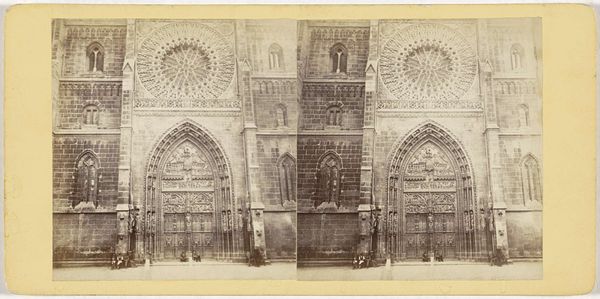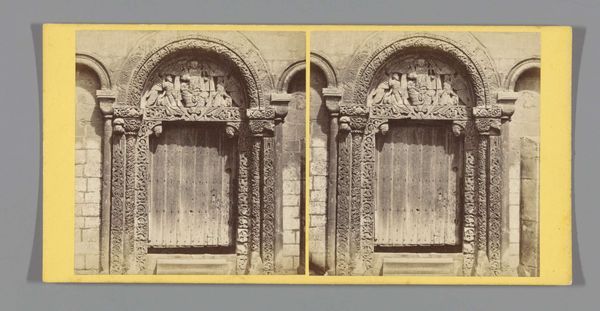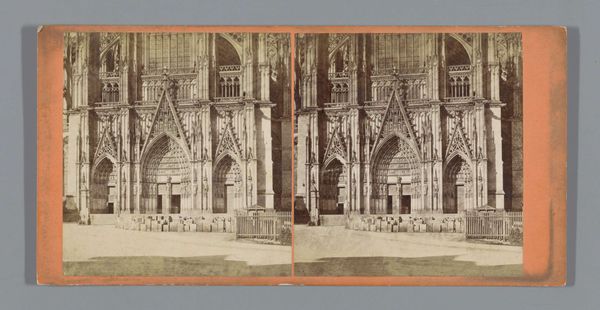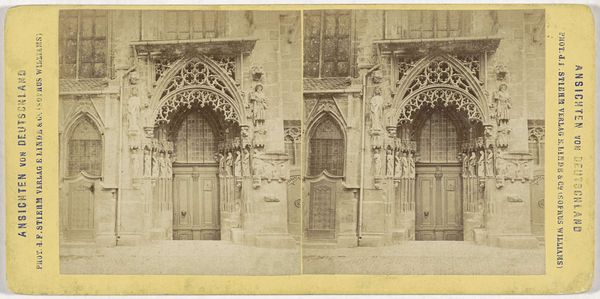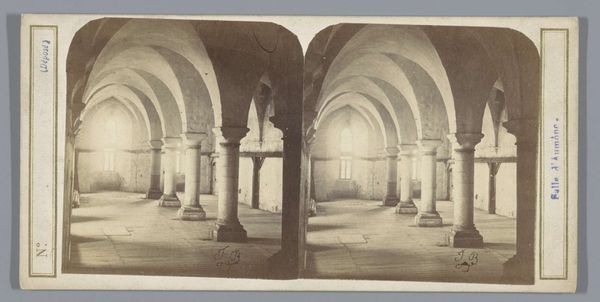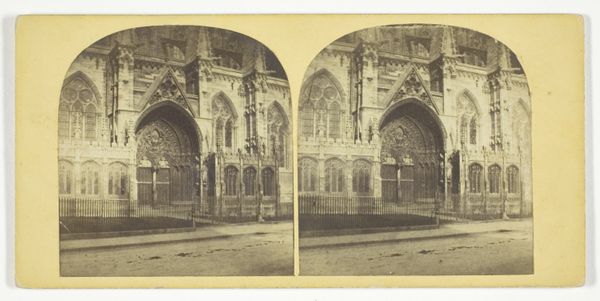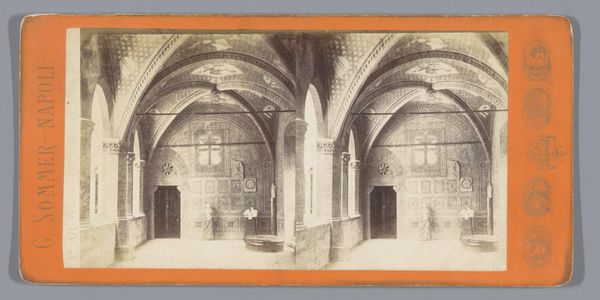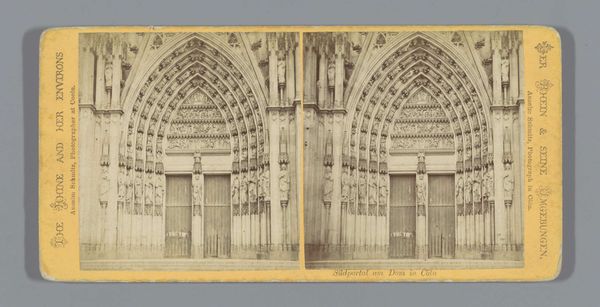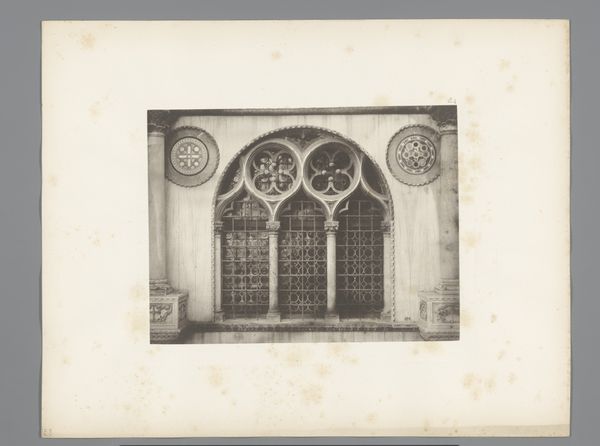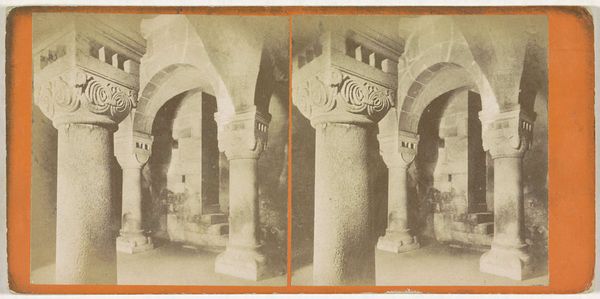
Dimensions: height 86 mm, width 175 mm
Copyright: Rijks Museum: Open Domain
Editor: We're looking at "Portal van de Maria Hemelvaartkerk op de Nonnberg, Salzburg," taken sometime between 1862 and 1880. It appears to be a photographic print. It's fascinating how a seemingly simple shot of a doorway can feel so imposing. How would you interpret the architectural and visual elements in this photograph? Curator: The initial observation regards a stereoscopic image capturing the intricate Romanesque portal. Immediately, the interplay of light and shadow defines the architectural form. Note the shallow depth of field which flattens the structure, emphasizing its facade. The rough texture is significant to the formal interpretation. Editor: I see what you mean about the flatness, almost like a stage set. Do you think the composition guides our attention to specific details, or is it more about the overall impression? Curator: Consider the archway: The photograph's composition presents a symmetrical, almost rigid frame around it. Note how this arch mirrors the internal architecture, reinforcing a contained and perhaps theological statement. Editor: It’s like one arch within another. Are there any particular formal relationships that strike you as especially important? Curator: The subdued tonal range in conjunction with the doubling via stereoscopy elicits a curious tension between presence and absence. A crucial element for understanding. Editor: The formal analysis has highlighted nuances I initially missed; it's pushed me to consider not just what is depicted but how. Curator: Indeed, by scrutinizing form, we illuminate meaning, acknowledging not simply the subject but also the artist's intent within the architectural context.
Comments
No comments
Be the first to comment and join the conversation on the ultimate creative platform.

